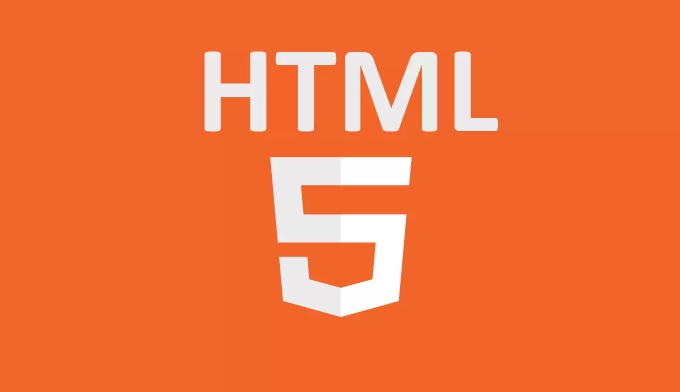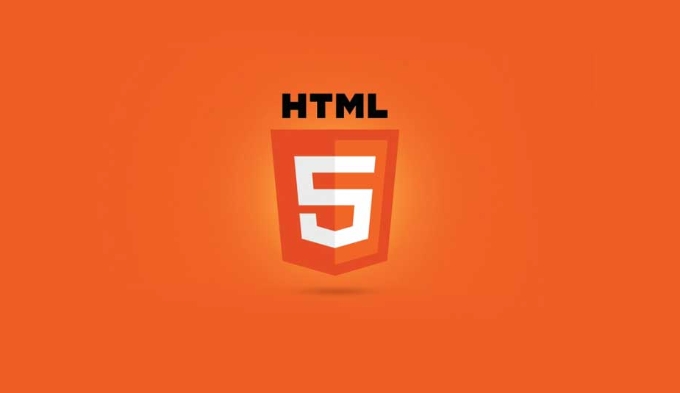How to use semantic HTML5 elements for page structure?
Jul 12, 2025 am 01:20 AMSemantic HTML5 elements can improve accessibility and SEO effects. The specific key points are as follows: 1.

The use of semantic HTML5 elements is actually not just to make the code look more "professional", it can help browsers, search engines and auxiliary devices better understand page structure. If used correctly, it can improve accessibility and SEO effects.

Let’s talk about a few key points based on common structural needs.
1. Use <header></header> and <footer></footer> correctly
These two tags are not only available at the top and bottom of the page, they can also appear in articles or modules. For example:
 <ul>
<ul>
<header></header> usually includes website logos, navigation bars, etc.;<header></header> can place titles, author information, etc.; <header>
<h1>My Blog</h1>
<nav>...</nav>
</header>
<article>
<header>
<h2>Article Title</h2>
<p>Author: Xiao Ming</p>
</header>
<!-- Article content-->
</article> <footer> Similarly, it can be used as a whole page or nested in <article> or <section> .
2. Use <nav> to wrap the main navigation area
Not all links are suitable for placement in <nav> . This tag is more suitable for the main menu structures such as global navigation and sidebar navigation.

Common practices:
<ul><nav> tag;<ul> to organize link items;<nav> as well; <nav>
<ul>
<li><a href="/">Home</a></li>
<li><a href="/about">About</a></li>
</ul>
</nav>In this way, the screen reader will recognize it as a navigation area, which will facilitate users to jump quickly.
3. Use <main> and <aside> to distinguish between primary and secondary content
The main content of the entire page should be wrapped in the <main> tag, and a page generally has only one <main> . It is used in conjunction with <aside> to let the browser know which is the main content and which is auxiliary information (such as sidebar advertisements, related recommendations).
Example structure:
<main>
<article>
<h2>Article Title</h2>
<p>Body content...</p>
</article>
</main>
<aside>
<h3>Recommended reading</h3>
<ul>
<li><a href="#">Other Articles1</a></li>
</ul>
</aside>Notice:
<ul><main> ;<aside> should be related to the main content but not required; 4. Use <section> and <article> to divide content blocks
Many people tend to confuse these two labels. Simply put:
<ul><article> is an independent content block, such as a blog post or a comment;<section> is a topic-related block, such as the introduction part and functional modules on the page;For example:
<section> <h2>About Us</h2> <p>We are a team dedicated to front-end development. </p> </section> <article> <h2>Latest News</h2> <p>We released a new version this week. </p> </article>
If you are not sure which one to use, you can ask yourself: Can this paragraph be taken out separately and reused? If you can, it might be <article> .
Basically that's it. The use of semantic tags is not complicated, but they are easily overlooked. Rational use of <header></header> , <footer></footer> , <nav> , <main> , <aside> , <section> and <article> can make the page structure clear and easy to maintain, and can also improve barrier-free experience and SEO performance.
The above is the detailed content of How to use semantic HTML5 elements for page structure?. For more information, please follow other related articles on the PHP Chinese website!

Hot AI Tools

Undress AI Tool
Undress images for free

Undresser.AI Undress
AI-powered app for creating realistic nude photos

AI Clothes Remover
Online AI tool for removing clothes from photos.

Clothoff.io
AI clothes remover

Video Face Swap
Swap faces in any video effortlessly with our completely free AI face swap tool!

Hot Article

Hot Tools

Notepad++7.3.1
Easy-to-use and free code editor

SublimeText3 Chinese version
Chinese version, very easy to use

Zend Studio 13.0.1
Powerful PHP integrated development environment

Dreamweaver CS6
Visual web development tools

SublimeText3 Mac version
God-level code editing software (SublimeText3)

Hot Topics
 Is H5 a Shorthand for HTML5? Exploring the Details
Apr 14, 2025 am 12:05 AM
Is H5 a Shorthand for HTML5? Exploring the Details
Apr 14, 2025 am 12:05 AM
H5 is not just the abbreviation of HTML5, it represents a wider modern web development technology ecosystem: 1. H5 includes HTML5, CSS3, JavaScript and related APIs and technologies; 2. It provides a richer, interactive and smooth user experience, and can run seamlessly on multiple devices; 3. Using the H5 technology stack, you can create responsive web pages and complex interactive functions.
 H5 and HTML5: Commonly Used Terms in Web Development
Apr 13, 2025 am 12:01 AM
H5 and HTML5: Commonly Used Terms in Web Development
Apr 13, 2025 am 12:01 AM
H5 and HTML5 refer to the same thing, namely HTML5. HTML5 is the fifth version of HTML, bringing new features such as semantic tags, multimedia support, canvas and graphics, offline storage and local storage, improving the expressiveness and interactivity of web pages.
 Understanding H5 Code: The Fundamentals of HTML5
Apr 17, 2025 am 12:08 AM
Understanding H5 Code: The Fundamentals of HTML5
Apr 17, 2025 am 12:08 AM
HTML5 is a key technology for building modern web pages, providing many new elements and features. 1. HTML5 introduces semantic elements such as, , etc., which enhances web page structure and SEO. 2. Support multimedia elements and embed media without plug-ins. 3. Forms enhance new input types and verification properties, simplifying the verification process. 4. Offer offline and local storage functions to improve web page performance and user experience.
 HTML5: The Building Blocks of the Modern Web (H5)
Apr 21, 2025 am 12:05 AM
HTML5: The Building Blocks of the Modern Web (H5)
Apr 21, 2025 am 12:05 AM
HTML5 is the latest version of the Hypertext Markup Language, standardized by W3C. HTML5 introduces new semantic tags, multimedia support and form enhancements, improving web structure, user experience and SEO effects. HTML5 introduces new semantic tags, such as, ,, etc., to make the web page structure clearer and the SEO effect better. HTML5 supports multimedia elements and no third-party plug-ins are required, improving user experience and loading speed. HTML5 enhances form functions and introduces new input types such as, etc., which improves user experience and form verification efficiency.
 HTML5: The Standard and its Impact on Web Development
Apr 27, 2025 am 12:12 AM
HTML5: The Standard and its Impact on Web Development
Apr 27, 2025 am 12:12 AM
The core features of HTML5 include semantic tags, multimedia support, offline storage and local storage, and form enhancement. 1. Semantic tags such as, etc. to improve code readability and SEO effect. 2. Simplify multimedia embedding with labels. 3. Offline storage and local storage such as ApplicationCache and LocalStorage support network-free operation and data storage. 4. Form enhancement introduces new input types and verification properties to simplify processing and verification.
 HTML5 and H5: Understanding the Common Usage
Apr 22, 2025 am 12:01 AM
HTML5 and H5: Understanding the Common Usage
Apr 22, 2025 am 12:01 AM
There is no difference between HTML5 and H5, which is the abbreviation of HTML5. 1.HTML5 is the fifth version of HTML, which enhances the multimedia and interactive functions of web pages. 2.H5 is often used to refer to HTML5-based mobile web pages or applications, and is suitable for various mobile devices.
 The Connection Between H5 and HTML5: Similarities and Differences
Apr 24, 2025 am 12:01 AM
The Connection Between H5 and HTML5: Similarities and Differences
Apr 24, 2025 am 12:01 AM
H5 and HTML5 are different concepts: HTML5 is a version of HTML, containing new elements and APIs; H5 is a mobile application development framework based on HTML5. HTML5 parses and renders code through the browser, while H5 applications need to run containers and interact with native code through JavaScript.
 Understanding H5: The Meaning and Significance
May 11, 2025 am 12:19 AM
Understanding H5: The Meaning and Significance
May 11, 2025 am 12:19 AM
H5 is HTML5, the fifth version of HTML. HTML5 improves the expressiveness and interactivity of web pages, introduces new features such as semantic tags, multimedia support, offline storage and Canvas drawing, and promotes the development of Web technology.






